This gallery features pictures and memories of stadia that have been part of your sporting stories. Before we take a look at the venues you have submitted, I’d like to provide an A.B.C of stadium locations which I recall with affection.
A is for Andorra and the Estadi Nacional
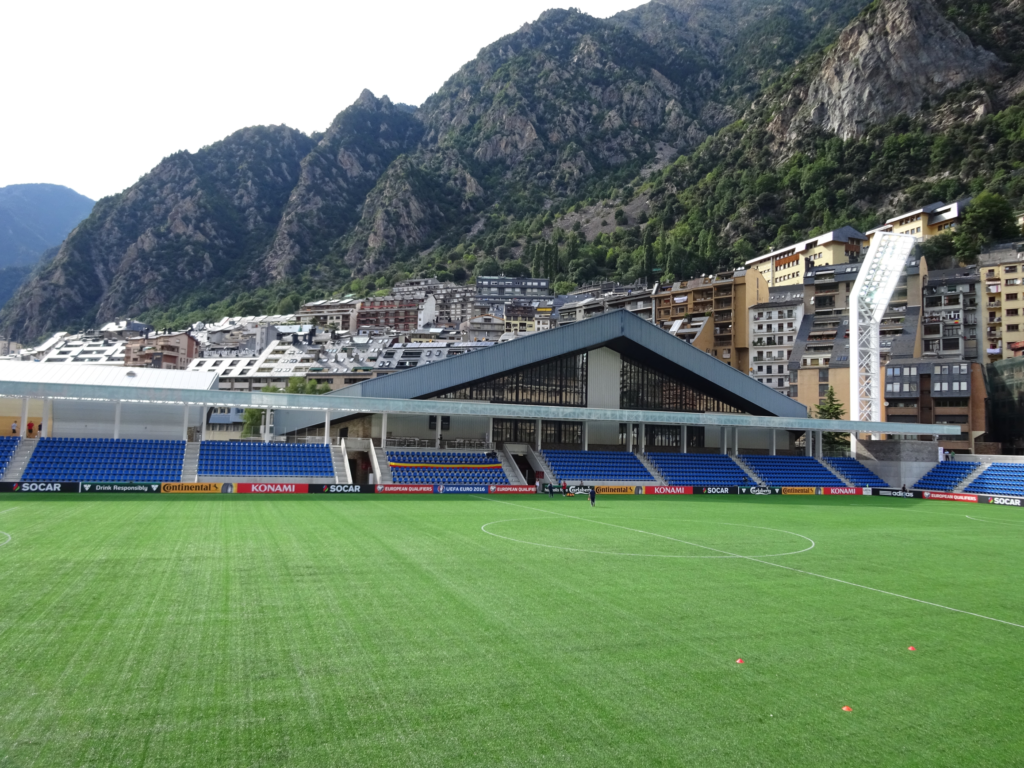
My first stadium choice is located in Andorra la Vella, Andorra’s capitol city which is some 1,023 metres (3,356 feet) above sea level – or so I’m told. It was here in September 2014 that Wales opened their campaign for Euro 2016 which was to be held in France.
Euro ’16 was a joy, I remember one fine moment when Wales played Northern Ireland in Paris. It was then that I met up with my old mate Gareth Morlais Williams and his son Dan a few hours before kick-off in a small café. As Gareth and I had waited a lifetime to attend a tournament featuring Wales, circumstances were close to perfect on that warm Parisian afternoon. This sporting bliss however had relied on a “Pig’s Bladder Moment” well over a year earlier in Andorra.
A Pig’s Bladder Moment
For many years I’ve describe knife edge incidents in sport as “Pig Bladder Moments”. These are the times when your emotions can be defined – sometimes for years to come – by a single action on the field of play. It’s a moment which relies on whether your team can successfully force a high tech pig’s bladder into a goal net, or over a try line, or into an end zone. Andorra v Wales was one such moment.
In a modern three sided football stadium given much of its character by the surrounding mountains, Welsh striker Gareth Bale took a free kick (for the second time!) and scored to put Wales 2:1 ahead. The goal with less than 10 minutes remaining inflated belief amongst our Welsh fan base that we too would be part of the Euro 2016 party – and we were!
B is for Brentford and Griffin Park, the former home of Brentford FC

Like many fans I am aware of the changing sports landscape and demands for stadium facilities that are fit for purpose. A casualty of the new in sport is often the old. Here is one example of a disappearing sports world which I think of with affection.
West London football side Brentford played their final match at their Griffin Park stadium on 29 July 2020. Now part of footballing history Griffin Park was unique. If Andorra had a three sided stadium, Brentford went one better and had pub on the four corners of its ground.
In 2015 I went with a bunch (if this the collective noun?) of Cherries fans to Brentford to celebrate a disappearing football culture with a pre-match drink in each of Griffin Park’s pubs!
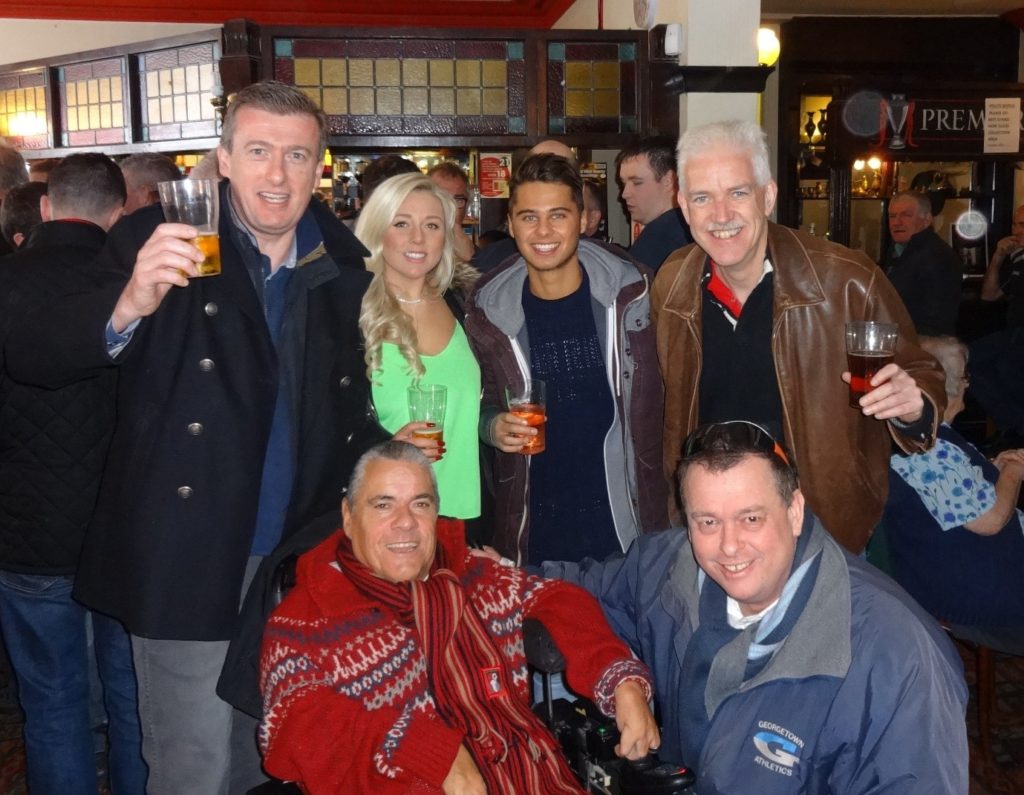
Here are a couple of Rob Trent's pictures of that day
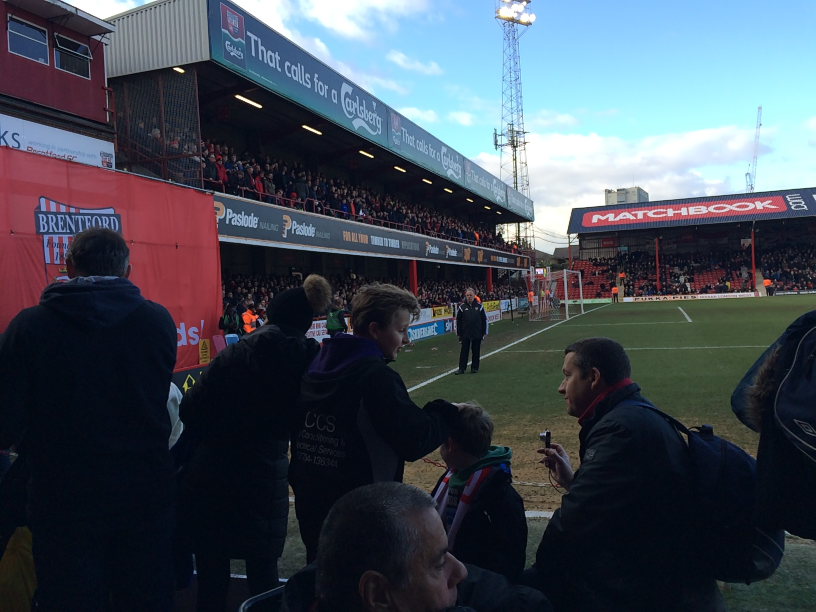
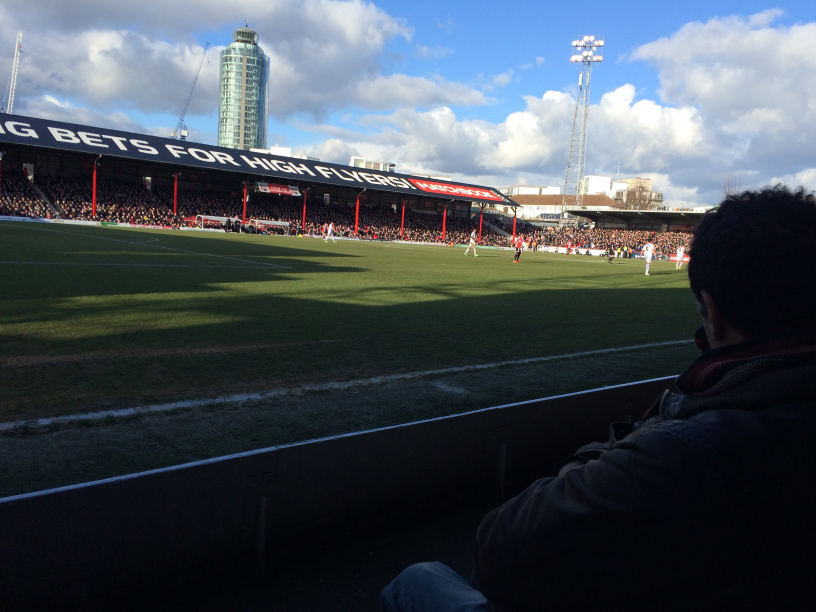
C is for Cardiff and Ninian Park, home stadium of the Cardiff City Bluebirds 1910 to 2009
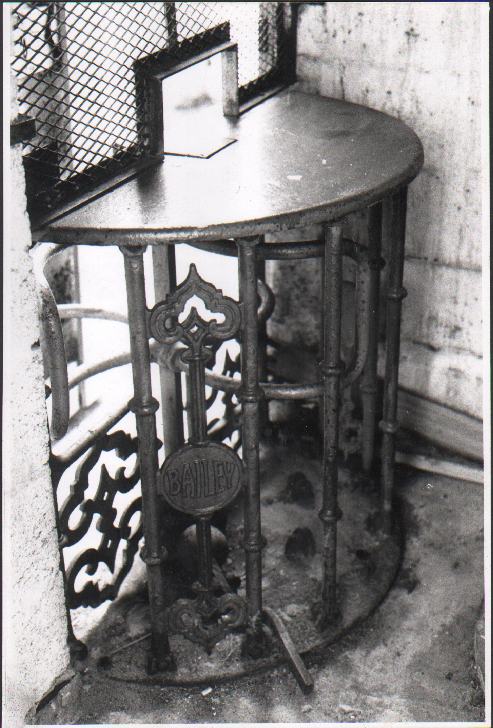
Ninian Park Home Stadium of the Cardiff City Bluebirds 1910 to 2009
Going to the Match
One of my lasting memories of Ninian Park was the match-day ‘sense of anticipation’, something that I first experienced as a child with my father in the late 1960s.
Well before my 10th birthday – I started watching Cardiff City FC with Dad who had been born in 1927, the same year Cardiff had won the English FA Cup – the only Welsh team to have done so!
Although we had watched the occasional fixture together, by 1970 – mainly due to my enthusiasm – Dad bought our first set of season tickets.
Like other fans of my generation, I can still list the players I first cheered for. Names such as Davies, Bell, Sutton, Carver, Murray, Bird, King, Harris, Clark and of course the Welsh great John Toshack – who was sadly soon to become a Liverpool player.
On game-day we would start our journey with a handful of fellow supporters in the Grangetown area of Cardiff. For me – a little guy – the views of tightly packed terrace housing soon gave way to tightly packed adults slowly shuffling their way to Ninian Park.
As the fans funnelled their way towards the stadium gates, I had a total reliance on Dad’s hand for navigation. The ocean of grownups that I had become engulfed by obscured everything other than the occasional reassuring glimpse of an enormous Ninian Park floodlight towers. Towers which provided me with an increased sense of anticipation as well as orientation.
Nestled in this world of restricted views, I could hear the occasional football chant, or the loan cry of “Bluebirds”. Another distinctive sound was that of the lottery ticket sellers. They promoted their ‘Golden Goal’ tickets which contained a printed time. If the team scored at the precise moment printed on your ticket, then you could win the top prize – one hundred British pounds.
To this day, I can clearly recall the ticket sellers shouting “Golden goal a shilling – a hundred quid for a bob”. A bob being a slang word for a British shilling – a currency that the UK was just about to abandon as it heralded in a new era of decimal coinage in February 1971.
One final squeeze
A last push and shove took us from the daylight into a darkened chamber of clanking iron turnstiles, through breezeblock corridors and up narrow concrete steps. We were still part of a human river, we were still in the darkness, but were seconds away from the most dazzling – at least in my eyes – of views and the most vibrant of colours.
There it was! That carpet of emerald green!
There it all was! There it all was! The vivid brilliance of the field, stands, floodlights and crowd. The stadium serenaded by the snap, crackle and pop of a public address system, relaying songs such as Elvis Presley’s “Can’t Help Falling in Love”.
The fresh air was stabbed at by plums of tobacco smoke, immediately and playfully returned to the crowd in wharfs, these pipe and cigarette smells always to be associated with Saturday afternoon football matches.
Swear words were seemingly saved up and then launched like grenades towards some referee, linesman or opposition player – or at times towards Davies, Bell, Sutton, Carver, Murray, Bird, King, Harris, Clark and even John Toshack.
Memories and keepsakes of Ninian Park
Today, my Cardiff City support is symbolised by some ‘unique’ souvenirs, perhaps none more individual than my garden BBQ being constructed from the bricks that once made up part of the Canton Stand at Ninian Park.
The 2011 photos below depict the time when I collected – with the help of a builder – bricks for my BBQ during the demolition of Ninian Park’s Canton stand.
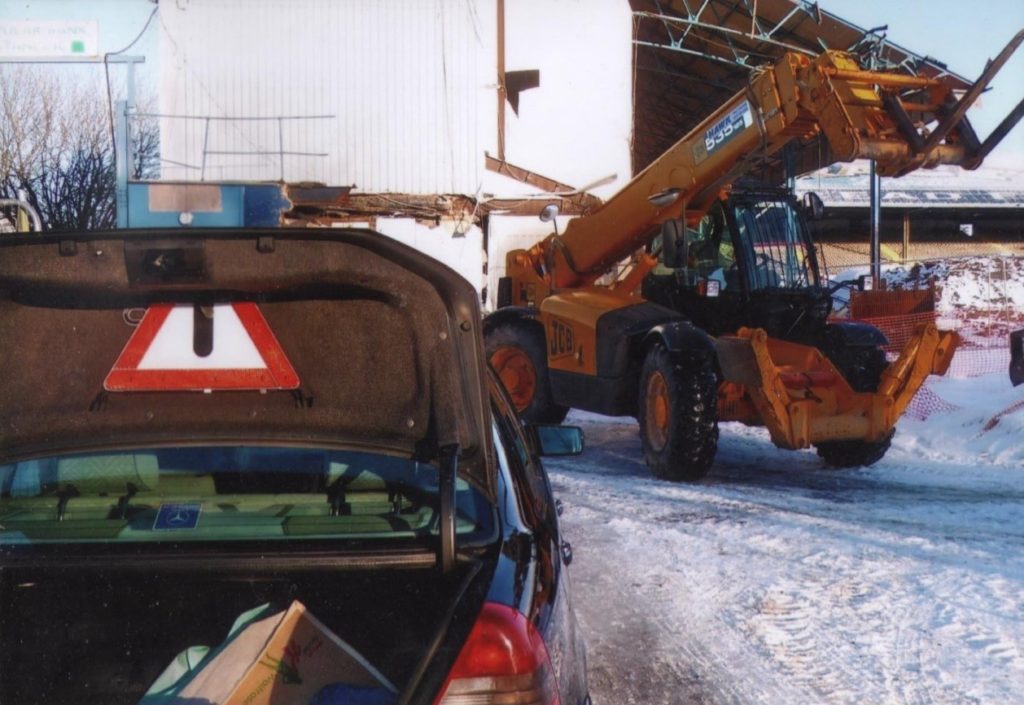
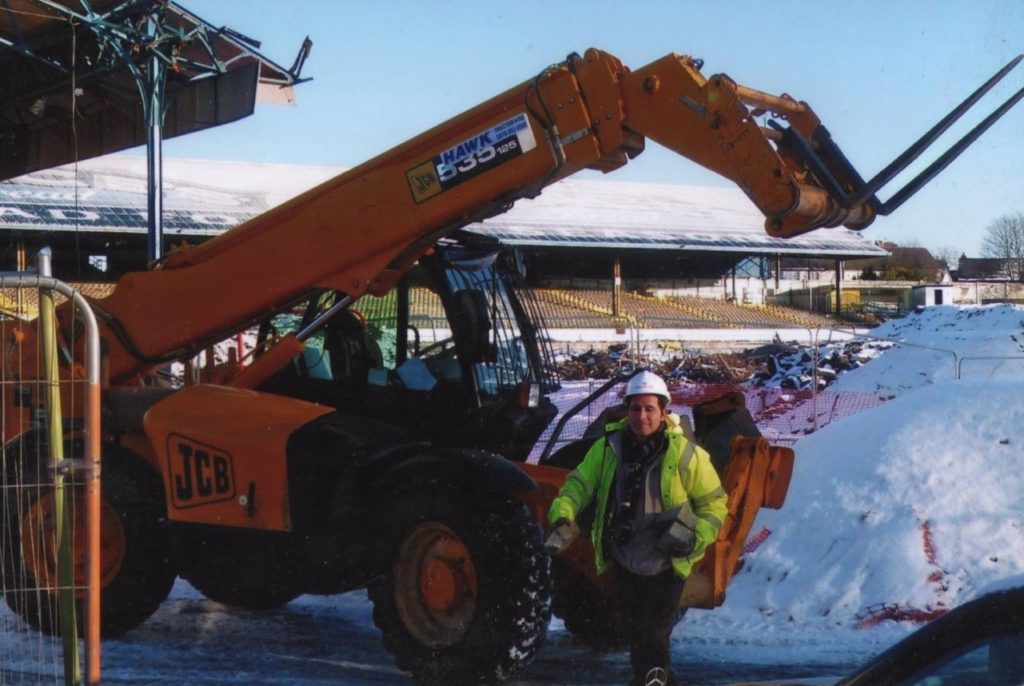
In 1945 my dad had watched Cardiff City play the Moscow Dynamos seated with his dad on the wooden benches of the Canton End (the stand picture below towards the left in the photograph).
Dad was so impressed by the Dynamos’ goalkeeper Aleksei ‘Tiger’ Komichk and his one handed saves and distribution, that my dad attended his student charity parade dressed as the Russian stopper!
The Ninian Park turnstile featured at the start of this post is also something I now own, I’ve also kept my 1970/71 season ticket booklet and the scarf Dad bought me when we used to go to Ninian Park together.
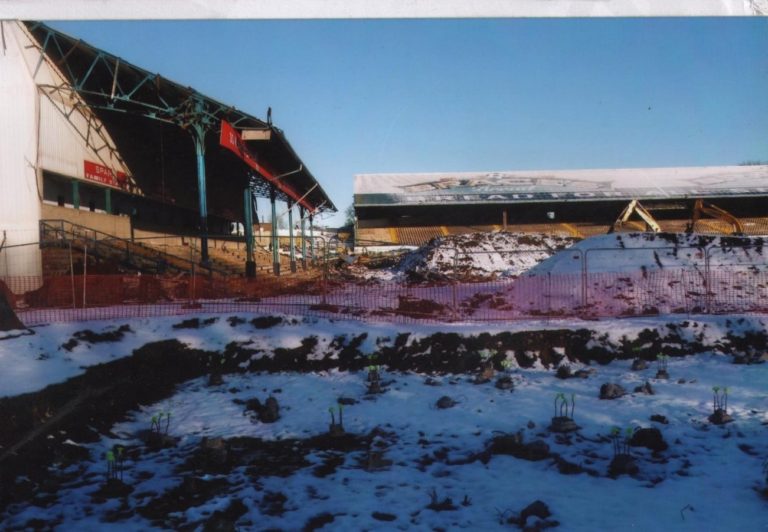
The stadium which once held 57,893 v Arsenal in 1953 and 62,634 for Wales v England in 1959 finally fell in 2009 leaving 99 years of memories.
Illustrated below are some of the match-day magazine covers that form part of my programme collection. The programme cost changed from one Shilling to 5p as the UK adopted a decimal monetary system in the early 1970s.
I bought the Romania programme at my first ever Wales football international.
The Wales v England programme from 1959 saw a record crowd of over 60,000 inside Ninian Park.

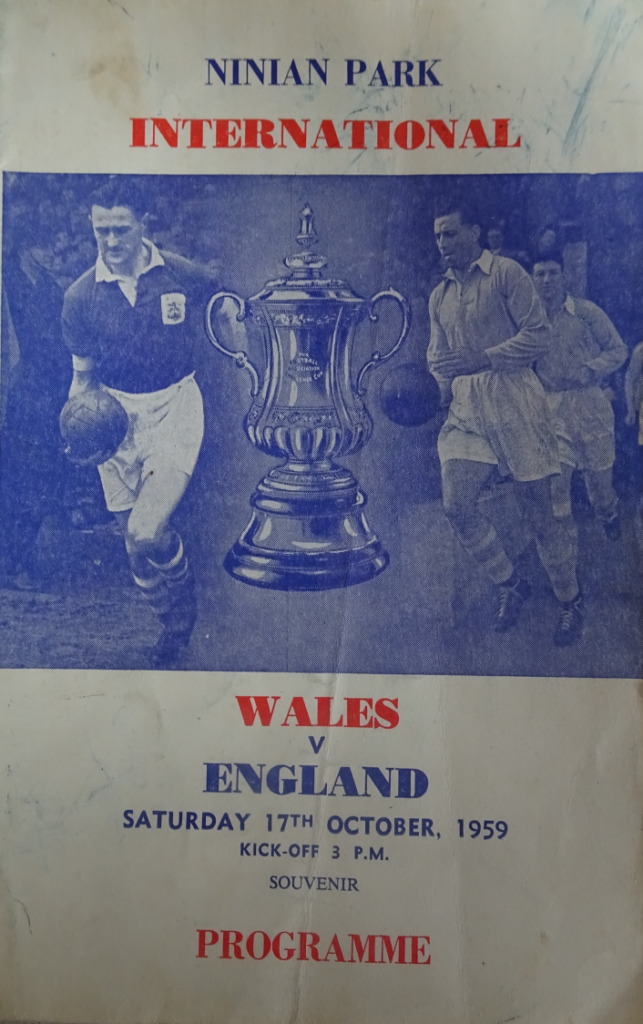

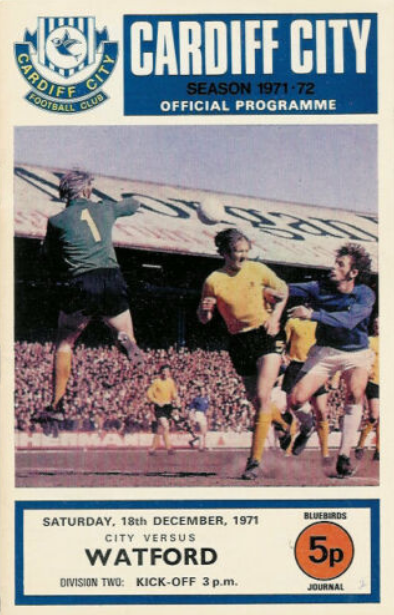

Miss the Old Ninian Park? Buy Tim’s Cardiff City Mug showing one of the original turnstiles!
For some it’s hard to imagine why two groups of people chasing a hightech pig’s bladder around a field could possibly matter. For others the moment that pig’s bladder successfully hits a goal net, crosses a tryline or enters an endzone, is what matters.
Tim Lewis Tweet
Below are your Stories and Pictures
Just one look - that's all it took
The Water Cube, Beijing - by Jessica Long
Jess is a Paralympic swimmer from the USA, and is one of the most successful athletes in Olympic history. Here she gives us an athlete’s perspective on a sports venue.
“My favorite pool is from the Beijing 2008 Games, the Beijing National Aquatic Center, also known as the Water Cube. I loved the style of the pool. Seeing all the colors when arriving in the team bus before competition got my adrenaline going. ”
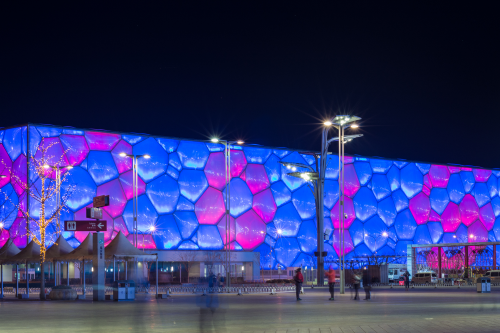

Jess continues “Not only was it fantastic to look at, it was fast! The way that they designed it made it so breathable while we swam. It seemed like every other race someone was breaking a world record. I don’t think there will ever be anything like it again..”
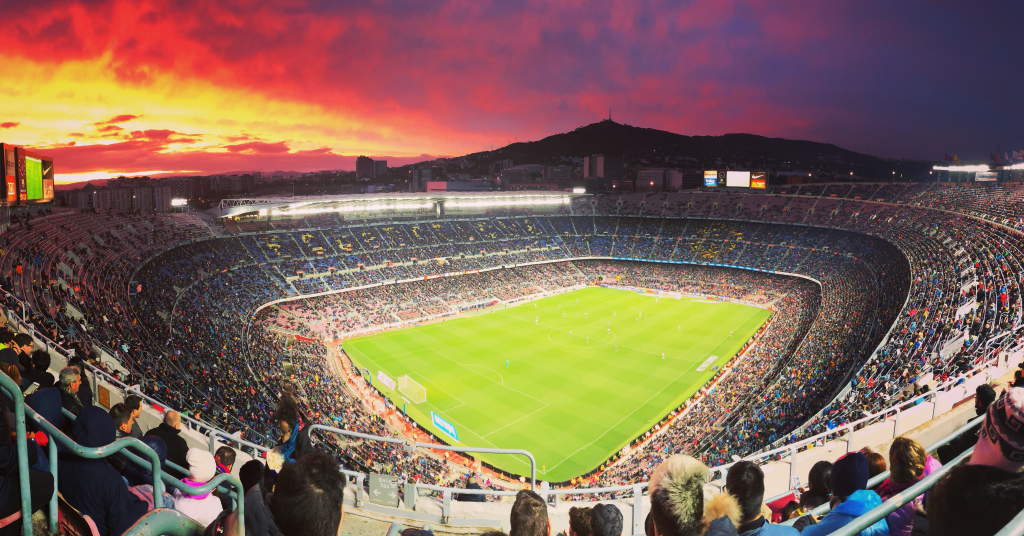
On any given Saturday - by Tom Garrard
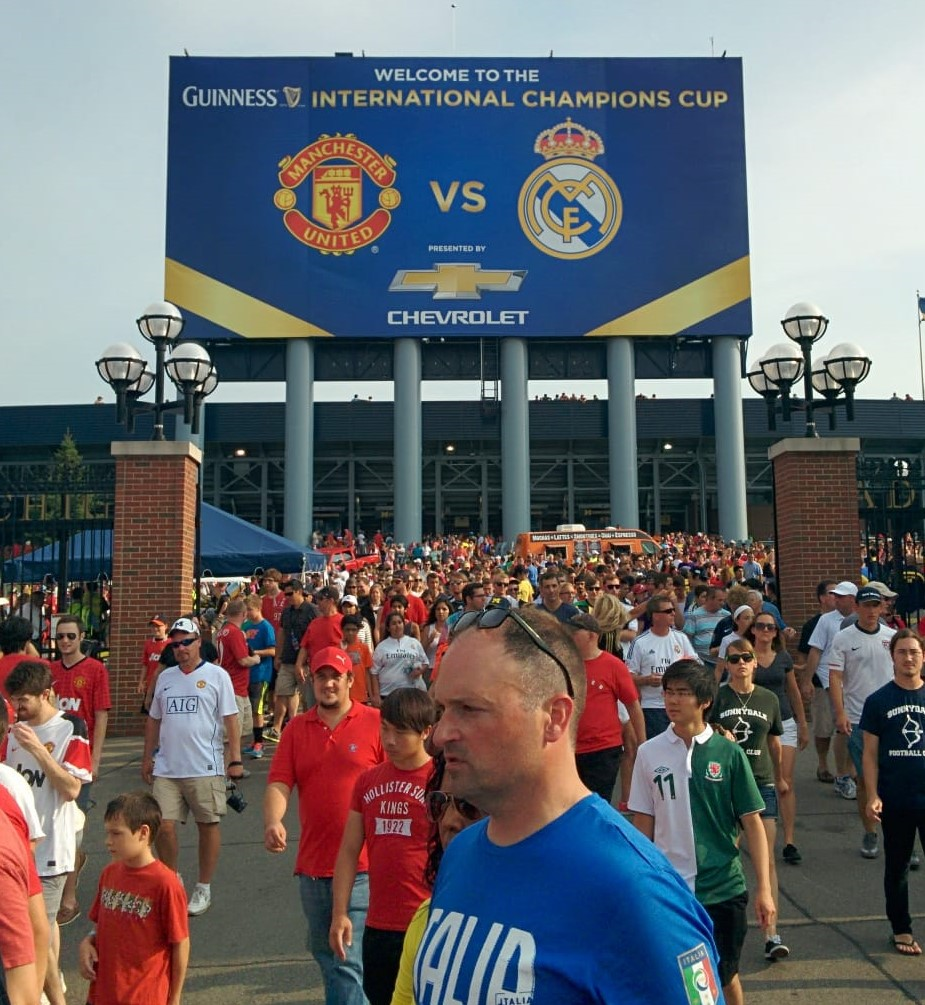
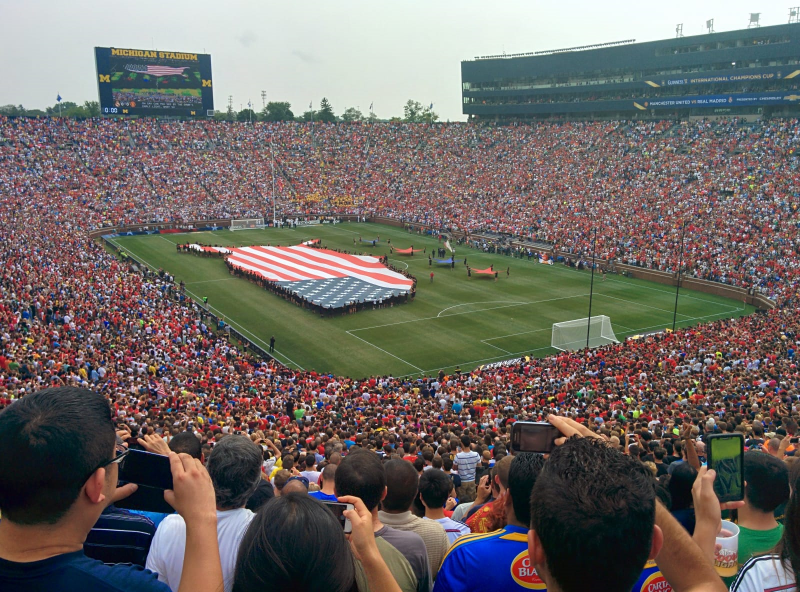
The final score was 3-1 to Manchester United, although just to make an already incredible day a bit more special, Gareth Bale scored for Real!.
Estadio Centenario: A South American Gem
Welsh football fan Andy Jones from Wrexham describes his favourite South America football stadium, the Centenario in Uruguay.
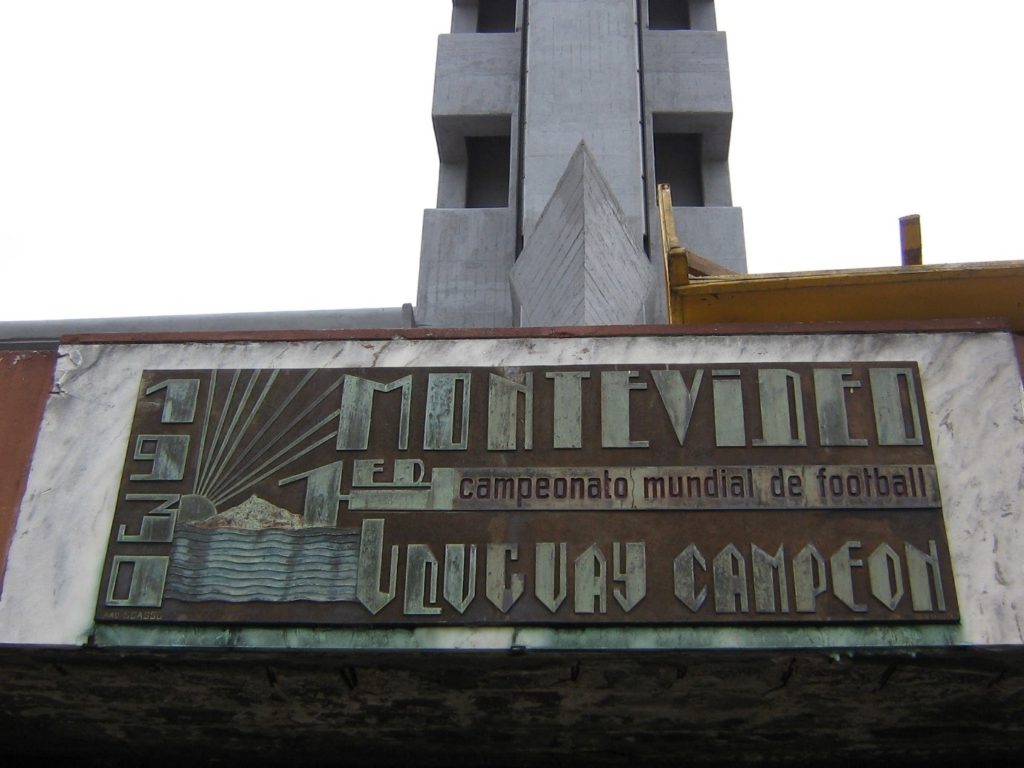
In Andy’s view the very fabric of the ground is permeated in soccer tradition.
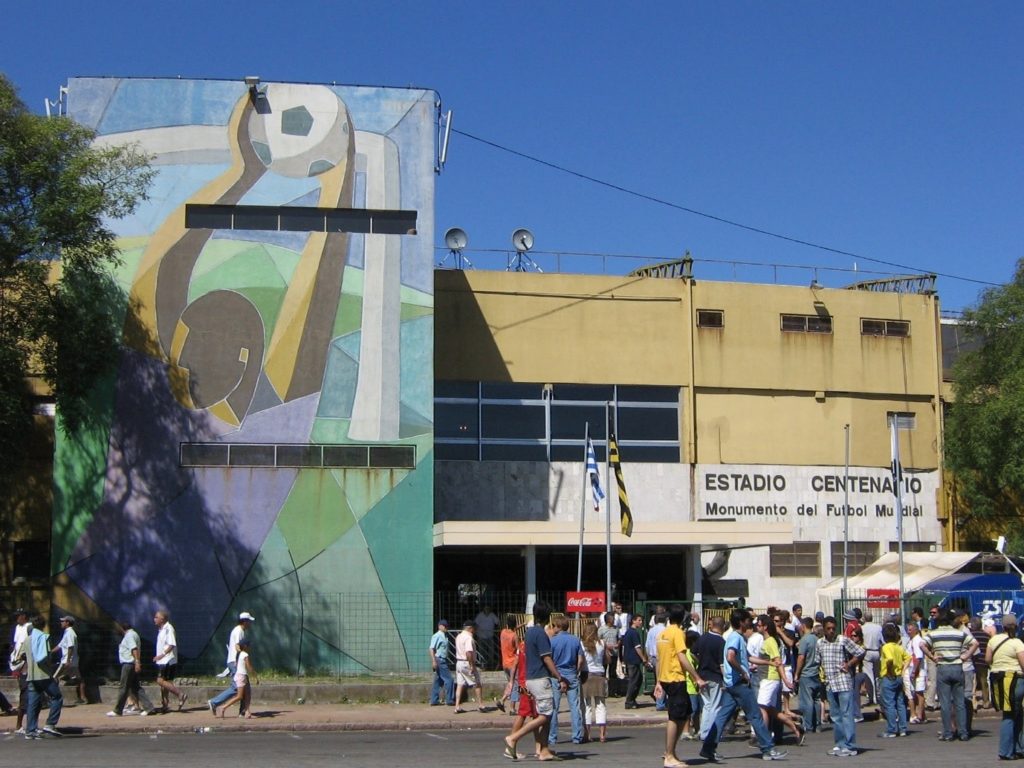
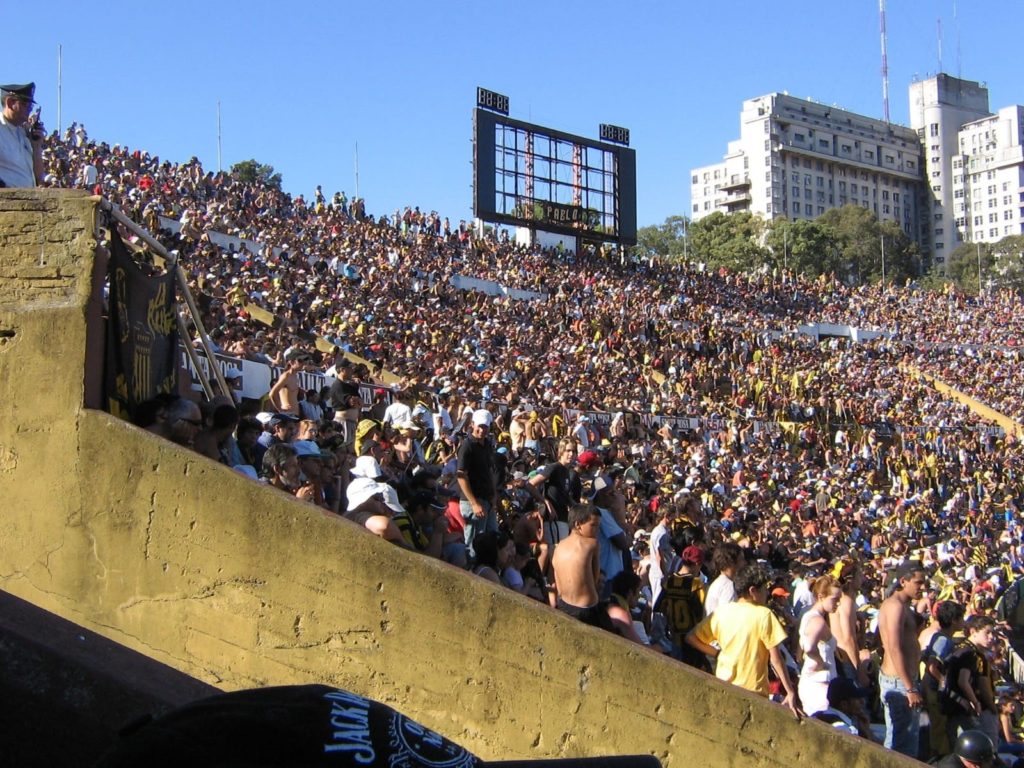
“Boca looks more striking”, Andy says, “the Azteca is extraordinary when you are in it, but there is something about the Centenario, which captures Uruguay’s very different, unique identity and the first world cup.”
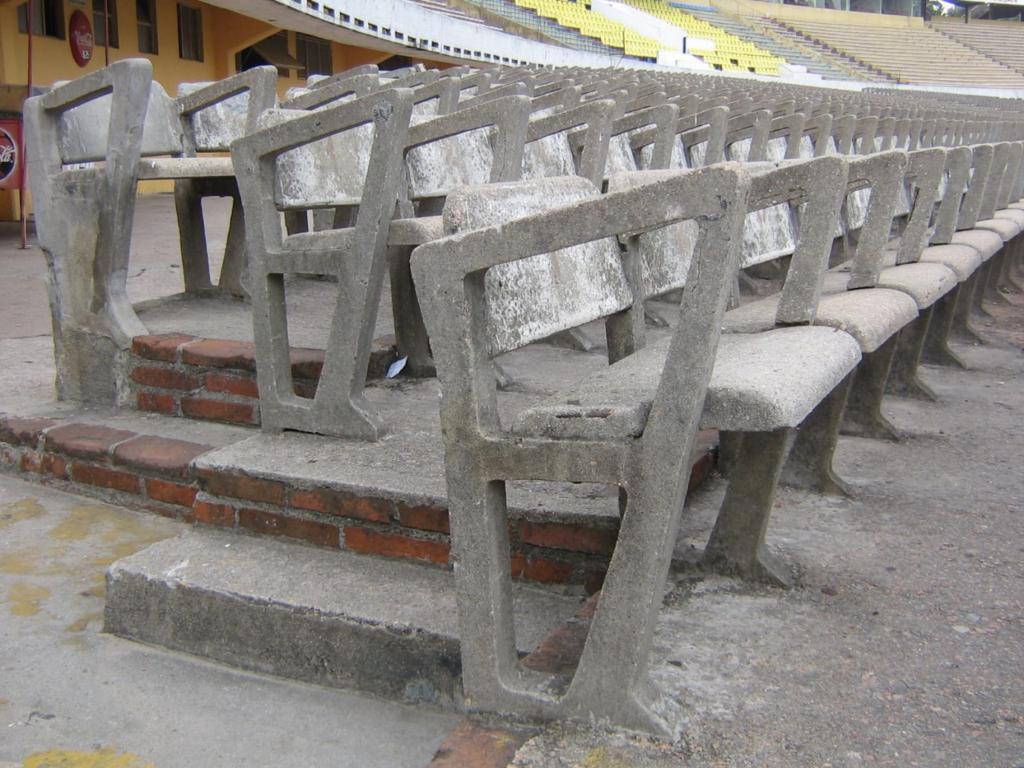
Virtually no redevelopment has been done since 1930, though this will change if Argentina get the 2030 World Cup, using a Centenary Centenario as their co host centrepiece. The stadium tour and museum has a treasure trove of stuff that shows how Uruguay revolutionised football in the 20s, using a multi racial team, playing possession football and thinking globally. Their two Olympic wins in 24 and 28 (why Uruguay’s shirts have four gold stars) gave the impetus to launch the world cup and changed football forever.

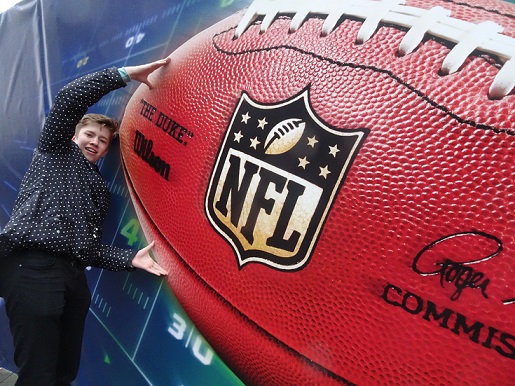
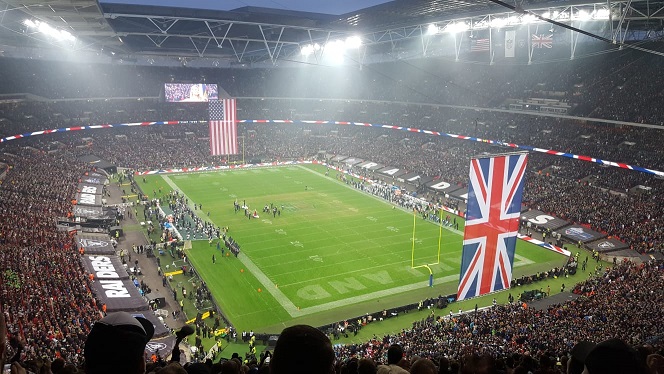
Marius Oswald (from Winterthur, Switzerland) on way to Wembley to watch his favourite NFL team Seahawks. Marius wrote “Seeing such a big stadium was a very overwhelming experience for me and I was super excited to finally watch American Football live for the first time.”
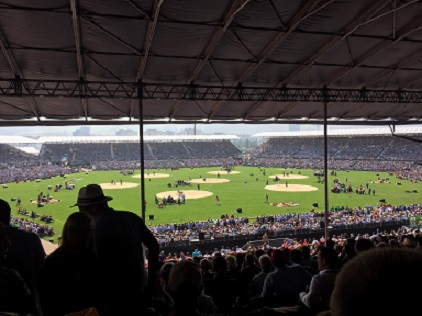
Eidgenössisches Schwing und Älplerfest at Arena Zug 23 to 25 Aug 2019
The most important event for the Schwinger family takes place every 3 years. The arena is only set up for a weekend, being the biggest temporary arena in the world with a capacity of 56,000 spectators. Picture from Dario Wildhaber
More Pictures from Dario
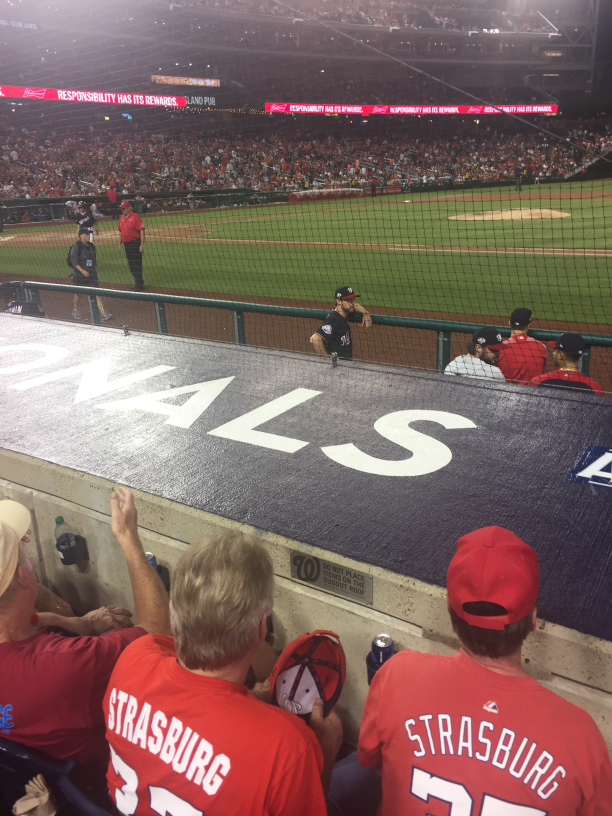
Goldy snapped this photo at the Washington Nationals baseball side’s home stadium
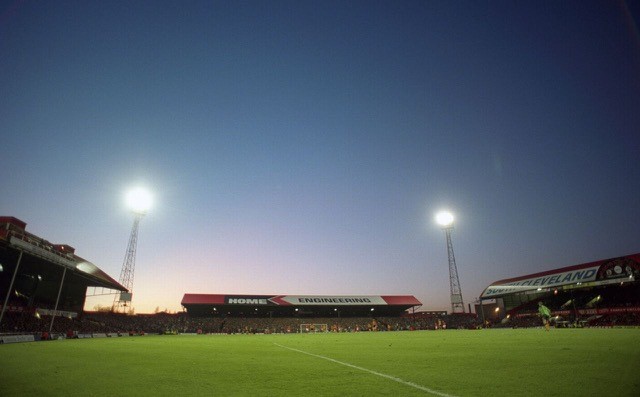
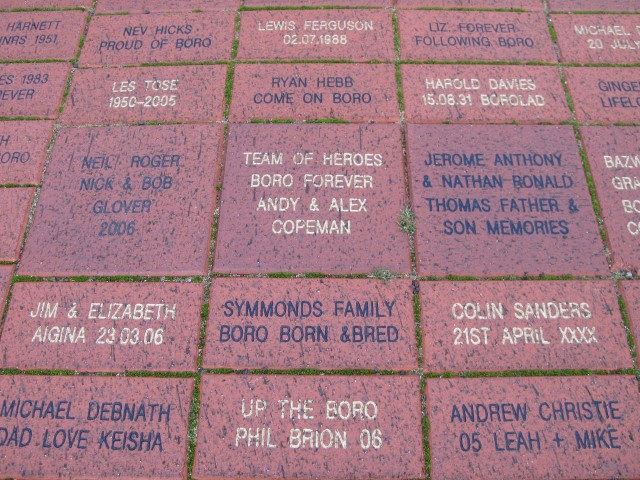
Ayresome Park Stadium, the former home of Middlesbrough FC. As you can see from the club’s wall of bricks Andy and Alex Copeman are part of the part of the club’s fabric!
Ewood Park - Richard Bowker
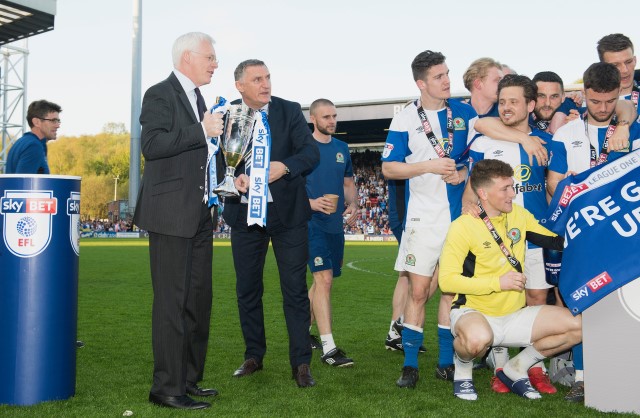

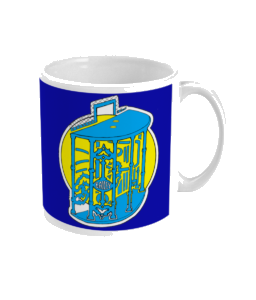
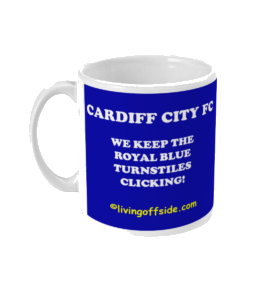
B for Brentford
Visiting London to me and my very best friends, all Bees supporters, always includes a visit to Griffin Park!
This charming, traditional and familiar stadium and club not only offer you four pre-game pints, one in each pub, but also half time delicaces (restoring your stomach?)
in form of top quality cappucinos and pancakes with cream and raspberry jam – in rain served under a tarpaulin.
At last to eventual mourning Cherries – see you in PL another year at Brentford Community Stadium!
Calle, chairman of Tim Lewis` fans, Sweden.